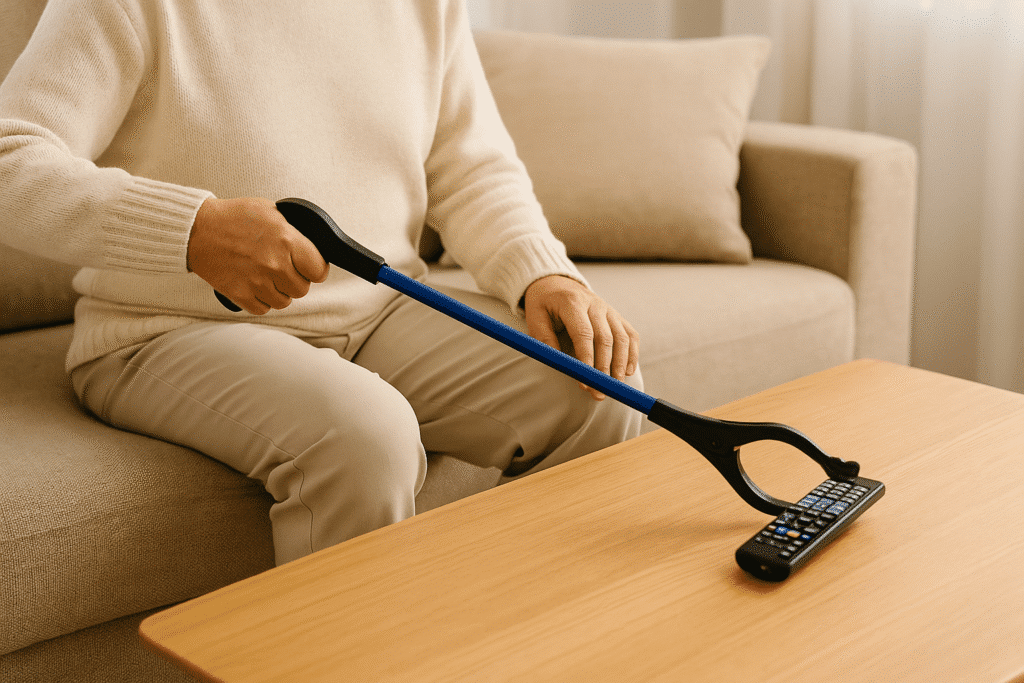Reading should be a relaxing experience, but for older adults, the wrong chair can lead to back pain, poor posture, and even a higher risk of falls.
If you want to make a reading chair more comfortable for the elderly, focus on proper support, safe design, and a cozy environment that encourages long reading sessions without strain.
TL;DR:
To make a reading chair more comfortable for elderly people, pick one with ergonomic support, the right height, and pressure-relieving cushions. Use skin-friendly fabrics, add handy accessories, and keep the area clear for safety and ease. These changes improve comfort, reduce strain, and make reading safer and more enjoyable for older adults.
Why Chair Comfort Matters for Seniors
Chair comfort matters for seniors because it reduces joint strain, supports good posture, and lowers the risk of falls. The right chair design can help older adults sit and stand more easily while promoting relaxation and enjoyment during reading.
Many older adults already face mobility or balance challenges; nearly 40% of Americans aged 65+ have at least one disability, with mobility issues being the most common.
A comfortable reading chair is not just about enjoyment; it’s also about maintaining safety and independence.
Benefits of a comfortable reading chair:
- Supports healthy posture and reduces back or neck pain.
- Makes sitting and standing easier, lowering fall risk.
- Encourages longer, more enjoyable reading sessions.
- Creates a sense of comfort, security, and relaxation.
How to Make a Reading Chair More Comfortable for Elderly People
To make a reading chair more comfortable for the elderly, choose a chair with ergonomic support, ensure the right height and size, add supportive cushions, pick skin-friendly fabrics, include helpful accessories, and keep the surrounding area safe and accessible.
A good reading chair for seniors is not just about style; it should be tailored to their comfort needs, safety concerns, and personal preferences. Here’s how to achieve that:
1. Choose a Chair with Proper Ergonomic Support
A chair that supports the body’s natural curves helps prevent strain and improve posture.
Look for lumbar support to maintain the lower back’s shape, a high backrest for neck and head support during long reading sessions, and padded armrests to reduce shoulder pressure while making it easier to stand.
In short, ergonomic design supports better posture and overall comfort.
2. Ensure the Right Chair Height and Size
If a chair is too high or too low, it can make sitting and standing uncomfortable or unsafe. The ideal seat height allows feet to rest flat on the floor with knees at a 90-degree angle.
Seat depth should let the person lean back comfortably while leaving a small gap behind the knees, and width should be enough for comfort without losing armrest support.
Proper chair height improves ease of sitting and standing, which is essential for seniors with mobility concerns.
3. Use Cushions for Added Comfort
Even a basic chair can feel luxurious with the right cushions.
Memory foam or gel seat cushions relieve pressure points, while back cushions provide extra lumbar support or fill gaps in oversized chairs.
Choose removable covers to make cleaning easier. Well-chosen cushions reduce pressure on joints and make reading more enjoyable.
4. Pick Skin-Friendly, Easy-to-Clean Fabrics
Seniors often have more delicate skin, so the right materials are important.
Breathable fabrics like cotton blends or microfiber prevent overheating, smooth textures help avoid skin irritation, and washable covers keep the chair clean and allergen-free.
Breathable fabric increases sitting comfort, especially during long reading sessions.
5. Add Supportive Accessories
Small, thoughtful touches can make a big difference in comfort and convenience.
A soft throw blanket adds warmth, a side table keeps books and drinks within reach, and an adjustable reading lamp reduces eye strain.
Keeping essentials close improves reading convenience and encourages longer, more relaxed reading time.
6. Keep the Area Safe and Accessible
Falls are the leading cause of injury for older adults, with over 14 million incidents reported in the U.S. each year.
Keep walkways around the chair clear of clutter, cords, and loose rugs. Good lighting helps prevent trips, and a nearby grab bar offers added support for standing.
Clear pathways lower fall risk and make it safer to enjoy a favorite book.
Fall-Prevention Tips for Reading Areas
A cozy reading spot should also be a safe one. Since most senior falls happen at home, it’s important to remove hazards and create a clear, stable space around the chair.
- Clear the floor area: Remove loose rugs, trailing cords, and any clutter that could catch a foot or cane.
- Improve lighting: Use bright, even lighting so the path to and from the chair is visible at all times, especially at night.
- Ensure stable flooring: If the chair is on a smooth surface, use a non-slip mat or rug gripper to prevent sliding.
- Place a grab bar or sturdy armrest nearby: This gives extra support when standing or sitting down.
- Position the chair away from high-traffic zones: This reduces the risk of someone bumping into it and causing a fall.
Recommended Chair Types for Seniors
The best reading chair depends on the user’s comfort needs, mobility level, and available space. These options combine support, ease of use, and safety features.
- Lift-assist recliners: Gently tilt forward to help with standing, reducing strain on knees and hips.
- Rocker-recliners with locking mechanisms: Provide soothing motion but can be locked in place for safe sitting and standing.
- Armchairs with firm cushions and high backs: Offer stable support for posture and easy standing.
- Chairs with built-in storage pockets: Keep books, glasses, and remotes within reach to avoid unnecessary bending or stretching.
- Swivel chairs with stable bases: Allow easy turning without twisting the body, but ensure they have a lock or sturdy footing.
Final Words
A comfortable reading chair for the elderly should do more than look good; it should support healthy posture, make sitting and standing easier, and create a safe, inviting space to enjoy books without discomfort.
By combining ergonomic design, the right cushions and fabrics, thoughtful accessories, and simple fall-prevention measures, you can transform any reading spot into a place that’s both cozy and secure.
Comfort and safety work best hand in hand, ensuring reading remains a daily pleasure for years to come.
FAQs
What is the ideal chair height for seniors?
The ideal seat height for seniors is usually between 18 and 20 inches, allowing the feet to rest flat on the floor with knees bent at about a 90-degree angle. This height makes sitting and standing safer and more comfortable.
Are recliners safe for older adults?
Yes, recliners can be safe for seniors if they have stable bases, easy-to-use controls, and firm armrests. Lift-assist recliners add extra safety by helping users stand without straining their knees or hips.
How can I make an existing chair more supportive without buying a new one?
You can add lumbar cushions, memory foam seat pads, or a firm backrest to improve comfort and support. Placing a small pillow behind the lower back and using a non-slip mat under the chair can also help.
What’s the best cushion type for pressure relief?
Memory foam cushions are excellent for pressure relief because they contour to the body and evenly distribute weight. Gel cushions are also a good choice, as they stay cooler and reduce heat buildup during long sitting periods.
Lauren brings 8+ years of writing experience focused on accessibility, home organization, and senior living. Her practical guides are shaped by conversations with seniors and caregivers, helping readers simplify daily tasks with clarity and confidence.









